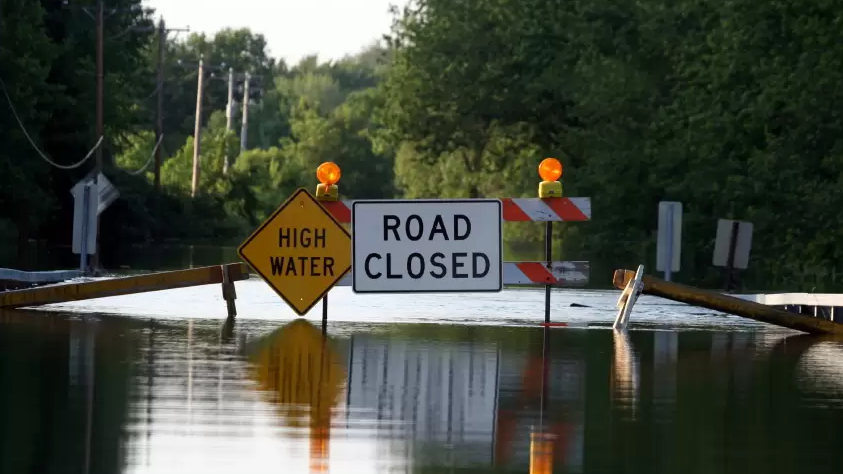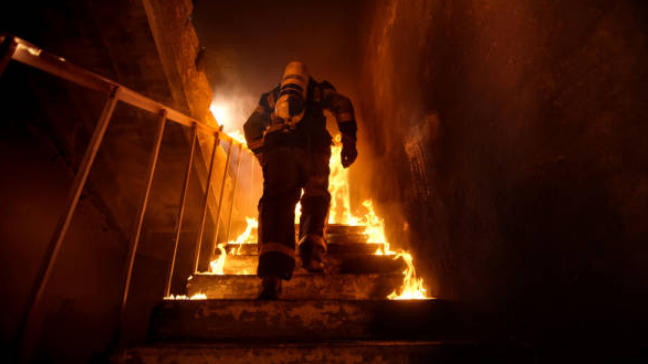
Water Damage and Flooding Statistics in Illinois
Illinois is a state that is highly prone to flooding as it has one of the largest inland systems of rivers, lakes, and streams of any state. That puts around 15% of the total land areas of Illinois, which is about 7,400 square miles, at risk of flooding. More than 90% of declared disasters in Illinois are due to flooding which causes an average of $700 million in damages annually.
Two of the biggest sources of flooding in Illinois are the Illinois River and the Mississippi River. The Mississippi River and Ohio River are among the longest rivers in the U.S. and together, they create most of the border of the state of Illinois. The flooding of the Mississippi River has become more severe as 7 of the top 10 flood crests in the Illinois section of the river have occurred in the past 20 years. For the Illinois River, 5 of the top 10 flood crests in the Peoria, IL area have occurred since 1998.
Between 2000 and 2018, Illinois experienced 1500 flood events, with an average of 1.5 flood events per week, which caused around $3 billion in damage. Fortunately, deaths from flooding in Illinois are not a common occurrence as there have only been 4 deaths from flooding since 2020.
With more than 25 billion gallons of water running through Illinois rivers and streams each day and over 250,000 homes and buildings in the state’s floodplains, it is very important for Illinois residents to purchase flood insurance through the National Flood Insurance Program (NFIP).

Urban Flooding in Illinois
One of the problems that Illinois faces in terms of flooding is urban flooding. According to the Urban Flooding Awareness Act (UFAA), urban flooding is “The inundation of property in a built environment, particularly in more densely populated areas, caused by rainfall overwhelming the capacity of drainage systems, such as storms sewers.” While heavy rain is the most common cause of urban flooding, it can also occur due to overflowing of nearby lakes and rivers.
The Chicago metropolitan area is one of the largest metropolitan areas of the U.S. with around 9.5 million people. The city of Chicago and its suburbs are at high risk of urban flooding when there is heavy rain fall because the drainage systems cannot effectively handle a high amount of rain. When the drainage systems are overwhelmed, there is nowhere else for the water to go, especially in the city of Chicago and other heavily populated areas that have more concrete than soil and grass. This is why flash flooding is common with heavy rainfall in Chicago and its suburbs.
Residents of Chicago and the suburbs are urged to protect their property with flood insurance. Even if you do not live in a flood zone, there are many flood damage claims each year that are made outside of the major flood zones. If your home or business is heavily damaged by flooding in Illinois, you need to call a local water damage restoration professional.
Fire Damage Statistics for Illinois
Fires are a problem in Illinois as home and structure fires cause a rate of deaths and injuries that is above the national average. According to NFIRS statistics, there were 2.7 deaths and 11.6 injuries per 1000 fires in 2021, which is higher than the national averages of 2.3 deaths and 7.2 injuries. For residential fires, there were 7.1 deaths and 29.3 injuries per 1000 fires which is also higher than the national averages of 6.5 deaths and 20.9 injuries.
The following are the percentage of deaths that occurred for each type of fire incident in 2021 compared to the national average:
- Structure fires: 83.7% (national average: 74.5%)
- Residential structure fires: 81.5% (national average: 70.9%)
- Vehicles: 12% (national average: 21.2%)
- Outside: 3.3% (national average: 3.0%)
The following are the percentage of injuries that occurred for each type of fire incident in 2021:
- Structure fires: 82.5% (national average: 82%)
- Residential structure fires: 77.3% (national average: 74.1%)
- Vehicles: 7.3% (national average: 9.2%)
- Outside: 1.3% (national average: 5.7%)
The following are the percentage of firefighter injuries that occurred for each type of fire incident in 2021:
- Structure fires: 86.1% (national average: 79%)
- Residential structure fires: 67.5% (national average: 56.7%)
- Vehicles: 5% (national average: 7%)
- Outside: 3.9% (national average: 13%)

The following are important fire statistics from to the State Fire Marshall Report of 2022:
- Fire departments throughout Illinois responded to 1,437,766 incidents, including 14,998 structure fires and 6,160 vehicle fires.
- There were 92 people killed by fires in Illinois.
- Fires caused more than $476 million in property damage.
- There was a 7.7% increase in fires in 2022 compared to 2021.
- 63% of deaths caused by fires occurred in homes.
- 72% of fires with fatalities occurred in buildings with no smoke alarms.
- Cooking is the number one cause of fires in Illinois.
- A fire was reported every 15 minutes in Illinois in 2022.
- An Illinois fire department responded to an emergency every 2.7 minutes in 2022.
- Illinois fire departments responded to 1,016,290 rescue and medical emergencies in 2022.
Fires cause immense damage to homes and businesses and the damage can worsen after the fire due to lingering byproducts like smoke and soot. It is important to call a local fire damage restoration professional as soon as the fire is out.

Illinois Water and Fire Restoration Services and Leads
There are fire and water damage restoration contractors in Illinois who can help affected homes and businesses with fire and smoke damage cleanup as well as flood cleanup. These professionals are available 24 hours a day to respond to emergencies.
Need help now? Call your local restoration contractor at (888) 915-7197.
Thank you for visiting us.
Are you a disaster restoration company looking for more leads? Check out our registration page and see how you can join our lead generation program!



